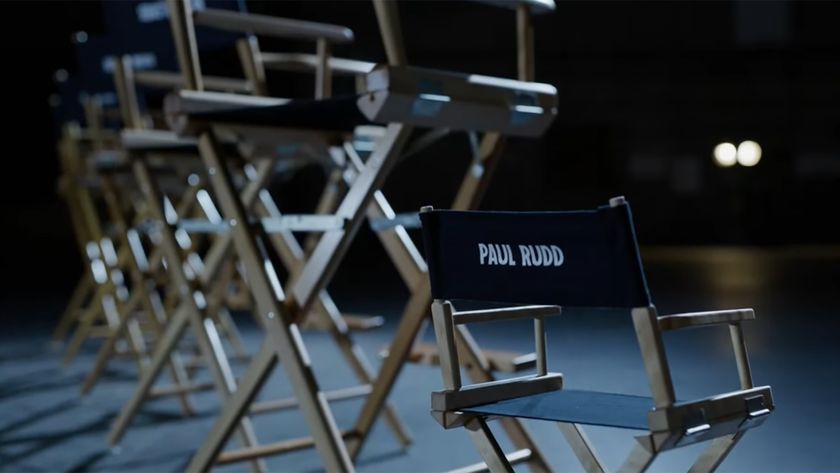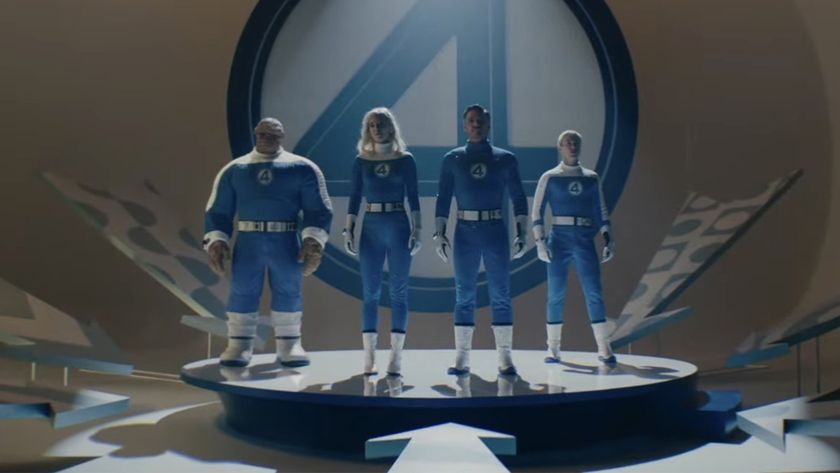Avengers: Infinity War ending explained: your biggest questions answered
Let's remind ourselves of the big questions we had after watching the Avengers: Infinity War ending
Let's be honest, we're still not over Avengers: Infinity War and with Captain Marvel and its obvious links to the Avengers: Infinity War ending and Avengers 4: Endgame set to hit cinemas this week, now is as good a time as any to remind ourselves of the big questions we had after watching the heartbreaking Avengers: Infinity War ending for the very first time.
If you've been living under a rock for the last few years and haven't seen Infinity War yet, or are even unsure what this whole superhero thing is about, well... you really shouldn't be here because spoilers abound from this point onwards. For the rest of us 'normal' people who live and breathe the MCU, get ready to relive the pain of the Infinity War ending in all its blood-curdling glory as we delve into the big questions it left us with and how they might relate to new Marvel movie Captain Marvel.
From who Nick Fury is trying to contact in the Avengers: Infinity War post-credits scene (psssst... it's Captain Marvel!) to the whereabouts of missing Avengers Ant-Man and Hawkeye, we now have the answer to some of these questions, but others remain mysteriously unknown and could be revealed in Captain Marvel. So read on for an in-depth analysis of the Avengers: Infinity War ending and what it could mean for the future of the MCU.
Best Marvel movies | Watch Marvel movies online | Best Marvel Easter eggs | How long do all the Marvel actors have left on their contracts? | Everything you need to know about the Marvel Infinity Stones | Who died in Infinity War? |Who is Hawkeye Ronin in Avengers: Endgame? | Avengers 4 theories | Avengers 4 ending | What are Captain Marvel's powers?
1. Why did Corvus Glaive's blade affect Vision so much?
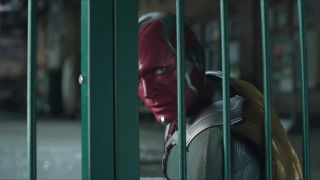
Vision did not have a good time of it in Avengers: Infinity War. The poor guy was incapacitated from the get-go and spent most of the movie being hunted by Thanos’ children who were trying to rip the Mind Stone from his head. But how was Vision injured so easily in the first place? If you remember Avengers: Age of Ultron (and the MCU movies he’s appeared in since) Vision is almost all-powerful and is easily one of the strongest Avengers in the group, so it might seem a little strange that Corvus Glaive’s blade was able to affect him so much. It definitely makes sense from a story point of view – Vision is really too powerful for the MCU because he could easily defeat most of the villains the Avengers come up against.
While it’s questionable whether he’d be able to defeat Thanos, directors the Russo brothers needed to de-power him so that it wasn’t an easy win (or a win at all) for the good guys, and this attack early on enabled them to do that. The only problem is that it’s never really explained why Glaive’s blade is able to hurt the all-powerful Vision so much. What we do know from the comics is that Corvus is inextricably linked to his blade, and cannot die if the blade is intact. In comics lore, the blade can cut through atoms, including the Hulk's skin, although this is never explicitly referred to in the movie. We do know that once Vision is stabbed, he’s never able to fully heal again making him significantly weaker and ultimately leading to his demise.
- Watch the Marvel movies in order
2. What’s going on with Bruce Banner and the Hulk?
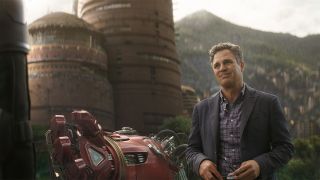
Bruce Banner and the Hulk are clearly having a domestic! The big green guy barely made an appearance in Infinity War after getting his ass kicked by Thanos early on and then every time Banner tried to entice him out to help fight, he was having none of it. But why? To say Bruce and the Hulk have a troubled relationship is a bit of an understatement, but he doesn’t usually pass up an opportunity to smash, so what’s the problem? Could it be that after spending two years loving life and being praised as a champion on Sakaar in Thor: Ragnarok, the Hulk just didn’t want to put in an appearance on Earth and have everyone potentially hate him again? Maybe, but that doesn’t feel like a good enough reason. There’s clearly something deeper going on here and it needs to be explored in Avengers 4.
For those fans who think the Hulk is just scared after his fight with Thanos, director Joe Russo has some words for you, via the Happy Sad Confused podcast: “I think people have interpreted it as Hulk’s scared. I mean, certainly, that’s not a… I don’t know that the Hulk is ever... he’s had his ass kicked before, and he loves a good fight. But I think that it’s really reflective of the journey from Ragnarok. These two characters are constantly in conflict with each other over control. And I think that if the Hulk were to say why, it’d be [because] Banner only wants Hulk for fighting. I think he’s had enough of saving Banner’s ass.” There you have it. Relationships are give and take Bruce!
Sign up to the SFX Newsletter
Get sneak previews, exclusive competitions and details of special events each month!
3. Who are Thanos’ children exactly?
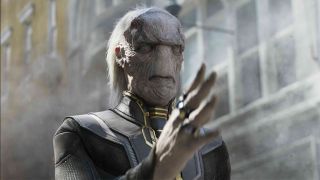
One of the not so great things about Avengers: Infinity War is that Thanos’ children aren't really given enough of an introduction or screen time for us to properly get to know them, so if you walked out of the cinema wondering who the hell that creepy Ebony Maw guy and his friends were, let me break it down for you. The children of Thanos - AKA, the Black Order or the Cull Obsidian in the comics, as introduced in the 2013 Infinity arc - are Thanos’ lieutenants who do his bidding and while they’re referred to as his children in Infinity War, he clearly doesn’t have the same feelings for them as he does for Gamora or even Nebula. In the comics, there are five of them - Corvus Glaive, Proxima Midnight, Ebony Maw, Black Dwarf, and Supergiant - but only the first four appear in Avengers: Infinity War.
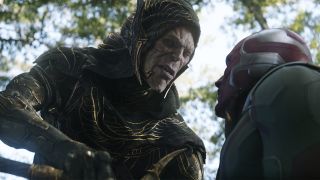
Corvus Glaive is the one who stabs Vision at the beginning of the movie and in the comics he’s Thanos right hand man, although this isn’t made clear in Infinity War. With superhuman speed, strength, and endurance, Glaive is pretty much indestructible as long as the blade of the glaive he wields isn’t destroyed. Although Vision stabs, and presumably kills him with his blade at the end of Infinity War there’s a chance he could come back in Avengers 4 as I don’t remember seeing the blade itself destroyed.
Proxima Midnight joined Glaive in the attack on Vision and Scarlet Witch, and in the comics, she’s a formidable warrior with a spear forged from a sun distorted by space-time that contains the power of a new star and a supernova. Yikes! However, her power doesn’t really come across in Infinity War and she’s fairly easily dispatched by Black Widow, Scarlet Witch, and Okoye.
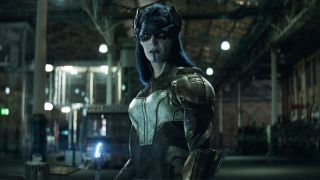
Ebony Maw is the one child of Thanos who gets some decent screen time in Infinity War and he uses it to kidnap Doctor Strange and bring the Time Stone to Titan. Maw is an evil super genius and often uses strategy and his ability to control others to his advantage. In the comics, he forces Doctor Strange to become a double agent, but in Infinity War he appears to just be a powerful sorcerer and Iron Man and Spidey kill him by causing a hull breach on his ship and forcing him into outer space.
Finally, there’s Black Dwarf, renamed Cull Obsidian in the MCU, who is perhaps the least developed of all of Thanos’ children. In case you hadn’t noticed, he’s super big and super strong, with unbreakable skin and an massive axe which would make Thor weep. Sadly, it didn’t do him much good in Infinity War as he’s thrown into the protective dome and killed during the attack on Wakanda.
4. Where are Hawkeye, Ant-Man, and Valkyrie?
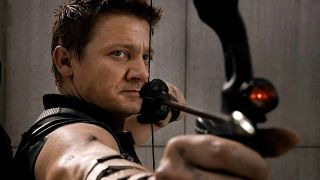
Despite the fact that Avengers: Infinity War has a cast list longer than most movies and their sequels thrown together, there are a few missing faces which need explaining. The most notable of which is Hawkeye, which everyone was talking about even before the movie was released due to the fact he’s missing from all the Infinity War trailers and posters. When we spoke to the Russo brothers they promised that there was a good reason for Clint Barton’s absence and that ‘all would be explained’, but it doesn’t feel like it was – at least not in this movie. Black Widow mentioned that Barton and Ant-Man took deals after the events of Captain America: Civil War because being on the run was too hard on their families, but that still doesn’t explain why Hawkeye and Ant-Man don’t join the fight in Infinity War.
I mean, come on guys, I know it’s a tough gig, but if we don’t win this one, half of the universe - including perhaps your families - are going to disappear. It might be time to put your reservations aside and help your teammates out. Of course, there’s always the possibility that they don’t know what’s happening, but if Cap was willing to call them in for the Civil War fight, I find it hard to believe he wouldn’t do the same for Infinity War given the stakes. That said, we now know what Ant-Man was up to during the Infinity War fight thanks to Ant-Man and the Wasp. While there's no sign of anything world-ending going on during the main storyline of the sequel, the Ant-Man and the Wasp post-credit scene shows Ant-Man trapped in the Quantum Realm when Thanos' snap happens. And as far as we know, he's still there...
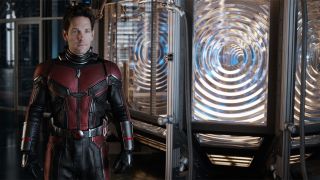
As for Hawkeye, he's looking like a cert to return in Avengers 4 – only not in the way we know him, if comic-led speculation and some leaked on-set pictures prove correct. The current betting is that he'll return as Ronin, a sword-wielding fan favourite, who appears in the aftermath of the Civil War comics event. The comics arc doesn't really tally with the events of Infinity War, so expect some artistic license, but this would definitely explain why Hawkeye didn't turn up in Avengers 3. It’s also looking likely that Clint Barton and Ant-Man are going to play a significant role in Avengers 4 as the Ant-Man and the Wasp ending involves the Quantum Realm, which if you know anything about it, could be super helpful when dealing with the Avengers: Infinity War ending.
The other significant character who I was disappointed to see missing from Infinity War was Valkyrie. Tessa Thompson’s tormented Asgardian was one of the best things about Thor: Ragnarok and it felt like she was going to be a recurring character in the MCU by the end of that film, so where was she when Thanos was messing with Thor and Loki? Despite Thor’s claim later in the movie that Thanos killed half his people, it looks a lot like he killed all his people to me, so is Valkyrie dead along with Loki and Heimdall? According to a Redditor who attended a Q&A with Joe Russo at his high school, the director confirmed that Valkyrie is alive, so it's possible we'll see her reappear in the MCU revealing that she either survived the attack or left the Asgardian ship before it happened. She always was a bit of a loner...
5. Why is Red Skull the Soul Stone’s guardian?
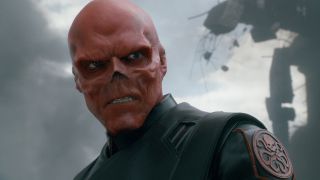
Did you recognise the guardian of the Soul Stone? If you’ve watched the rest of the MCU, you should. To be fair, Red Skull appears in one of the first Marvel movies - Captain America: The First Avenger - back when they really struggled making memorable villains, so you’d be forgiven for not quite being able to place the Soul Stone’s keeper at first. But yes, it’s Red Skull who Cap fought in his origin movie and who wanted to use the Tesseract, AKA the Space Stone, to rule the world. If you can’t remember what happened at the end of that film, Red Skull touches the Space Stone with his bare hands and vanishes without a trace. It originally looked like he’d combusted and died on contact, but we now know that he was actually transported to Vormir and trapped in a state of purgatory where he has to advise everyone who comes looking for the Soul Stone. Interestingly, Hugo Weaving didn’t choose to reprise his role from the first Captain America film and instead Marvel Studios cast Ross Marquand, who you’ll probably recognise as Aaron from The Walking Dead.
6. When did Thanos give up his destiny once before?

One of the most interesting lines of dialogue in Avengers: Infinity War, is also a bit of a throwaway line, but it has big implications for Avengers 4 so let’s revisit it. During the scene where Thanos claims the Soul Stone he tells Gamora that he nearly turned away from his destiny once before and he can’t let that happen again. At first glance, he could just be referring to all the times he’s failed to find the Infinity Stones, but on closer inspection it definitely sounds like more than that. He didn’t fail in his destiny… he nearly choose to turn away from it. What could make Thanos almost change his mind about his plan to bring balance to the universe by wiping half of it out? From what we’ve seen, the mad Titan is pretty hellbent on fulfilling his plan, so much so that he’s willing to kill his beloved daughter, so I can imagine what would make him question that, but we’re sure to find out soon. Why? Because nothing gets included in an MCU movie without good reason. Especially something which clearly references a significant event in the past of a main character which we have no knowledge of. It’s almost certainly going to come into play in Avengers 4 or possibly even Captain Marvel (more on that later).
7. Why didn’t Doctor Strange tell everyone else the plan?
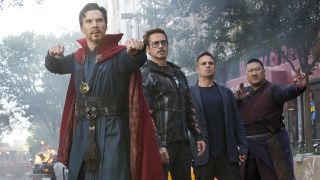
Because he’s obviously planning something and it involves Thanos winning… for now. When Doctor Strange uses the Time Stone to travel into the future and witness the bazillion ways the Avengers tried (and failed) to stop Thanos, he discovers that there’s only one series of events in which they defeat Thanos. That’s the plan Doctor Strange clearly intends to follow and it involves giving up the Time Stone, letting Thanos win, and then… somehow reversing it? Our feature Avengers: Infinity War is the beginning of the end of the MCU… here’s how Avengers 4 will restart it goes into how this might happen, so I’m just going to stick with why I think it’s all part of Doctor Strange’s plan for now.
He gave up the Time Stone waaaaaaay too easily. He literally says earlier in the movie that he’ll let Iron Man and Spider-Man die before sacrificing the stone, so it seems rather odd that that’s exactly what he does. Even Tony doesn’t understand it. And as he dies, he says: "It was the only way.” I think it’s pretty obvious that it’s all part of his plan to recreate the version of events in which the Avengers win… eventually. But what did surprise me is that he dies when Thanos snaps his fingers, which leaves it unclear about how the surviving Avengers are supposed to know the rest of the plan? Well, hopefully he told them during some down time between battles… or maybe he sent a group email outlining his plan… or perhaps he etched it on some debris on Titan where Tony can find it? I can’t believe Doctor Strange put a series of events into motion in which half the universe is wiped out and didn’t tell anyone how to fix it! How irresponsible is that?! Unless the whole point is that they don’t know so they don’t try to change the future in the wrong way... my head hurts!
8. Is the Infinity Gauntlet destroyed? And what does that mean for the Infinity Stones?
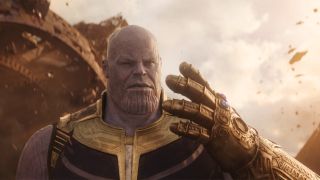
After Thanos did his whole snap of the fingers thing which wiped out half the universe the Infinity Gauntlet didn’t look so good. In fact, it looked like a crumpled mess. Clearly the power unleashed by all six Infinity Stones was too much for the Gauntlet, but more importantly, does this mean that Thanos can no longer wield the stones? The stones appeared to be undamaged - they’re sturdy things - and we know that even on their own they’re pretty powerful. Just ask The Collector! But surely Thanos’ power is severely reduced without the Gauntlet and the ability to wield all six stones at the same time? Hopefully this is the case because I don’t see any way the remaining Avengers can defeat him unless he’s at least weakened a bit, and now the stones are less protected, perhaps they can make a grab for the Time Stone and go back in time to set things right.
9. Who is Nick Fury trying to contact in the post-credits scene?
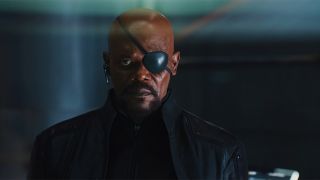
Marvel diehards will have recognised the logo on Nick Fury’s pager straight away, but for everyone else, it was Captain Marvel he was trying to contact. Yeah, that’s right, the Captain Marvel we haven’t met in the MCU yet. Soon to be played by Brie Larson when her solo movie arrives next year, and the same Captain Marvel who was supposed to have a role in Infinity War before it was cut, but who will definitely be appearing in Avengers 4. Do I need to say anymore?
In case you haven’t caught on yet, Captain Marvel is going to be a big deal in the MCU and she’s going to have a lot to do with how the remaining Avengers defeat Thanos. What makes me think that? Well, we already know that the Captain Marvel solo movie is set in the ‘90s and will feature Nick Fury and Ronan the Accuser (the baddie from Guardians of the Galaxy). We also know that Ronan used to work for Thanos, so while it’s a bit of a leap, we can probably assume Thanos has something to do with whatever happens in Captain Marvel. Plus, as soon as Fury realises what’s happening in Infinity War is linked to The Avengers' Battle of New York and Thanos he rushes to grab his old fashioned pager and call Captain Marvel. Why? Perhaps because he knows she has come up against Thanos before…
In case you don’t already know, Captain Marvel is pretty powerful. She’s got super strength, flight, energy manipulation, and more, and Marvel Studios’ Kevin Feige said “she will be by far the most powerful character we’ve ever introduced,” in a 2016 interview. Let’s just say Thanos better watch out. Interestingly, the logo we see in the post-credits scene is shown in Captain Marvel traditional blue, red, and gold colours, but we know from the Captain Marvel set photos that the costume in her solo movie is actually green. This could mean nothing or it could mean that Captain Marvel undergoes a cosmetic transformation between movies, but for now, we can probably safely ignore it.
Lauren O'Callaghan is the former Entertainment Editor of 12DOVE. You'd typically find Lauren writing features and reviews about the latest and greatest in pop culture and entertainment, and assisting the teams at Total Film and SFX to bring their excellent content onto 12DOVE. Lauren is now the digital marketing manager at the National Trust.

